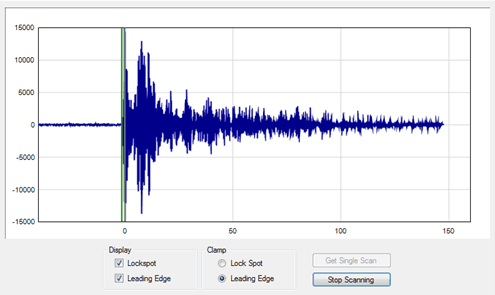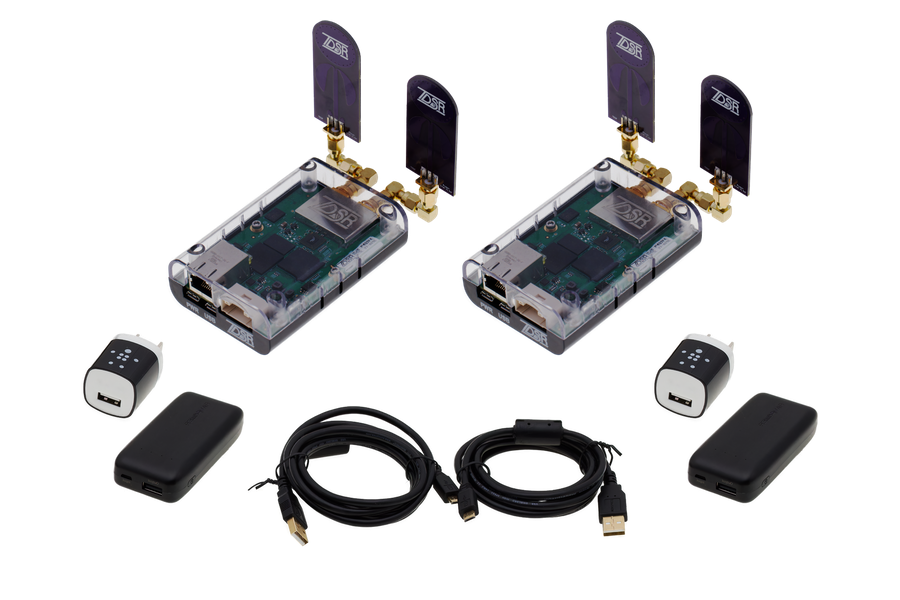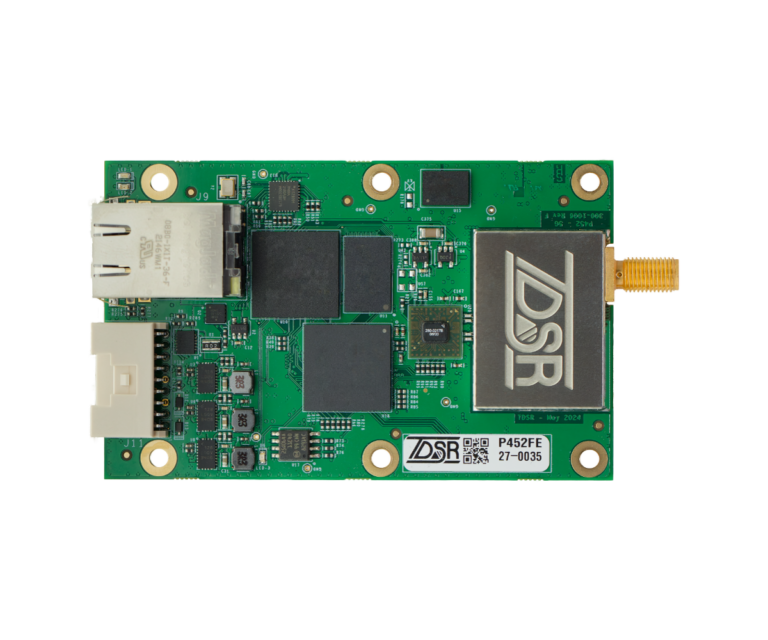Radar Sensing & Channel Analysis
Our Monostatic Radar Module (MRM) software configures our P452 UWB modules to operate as fully-coherent, short-range monostatic radar sensors. The Channel Analysis Tool (CAT) software allows P452 users to do radio propagation study and build communications channel models. CAT also supports bistatic and multistatic radar.
Using the P452 as a Monostatic Radar
Monostatic radar means a single device is used as both the transmitter and receiver. TDSR’s Monostatic Radar Module (MRM) software enables the P452 to operate this way, sending UWB pulses and then measuring the reflections from objects in its range to measure distance, detect motion, and infer other characteristics.
The MRM software opens the door to a wide variety of compelling uses, including Synthetic Aperture Radar (SAR) imaging, tagless people tracking, obstacle detection and avoidance, drone altimetry, and proximity sensing. In each case the signal processing is different based on the application. We provide a feature-rich API with sample C and MATLAB code to aid programmers in their development efforts.
The MRM software enables you to pursue radar applications which require:
Using the P452 for Channel Analysis & Bistatic / Multistatic Radar
The Channel Analysis Tool (CAT) software allows the user to operate the P452 as either a communications propagation tool or as a bistatic/multistatic radar system. This is possible because both applications are simply different ways of viewing the same RF waveform. A communications engineer would note the first arriving energy and comment that the multipath is due to other reflectors in the channel. He or she might then use this waveform to compute the delay spread of the channel or evaluate the impact of multipath on inter-symbol interference.
A radar engineer would look at the same waveform scan, point out the first arriving energy and comment that the multipath reflections are due to a mix of fixed clutter and targets operating in the area. He or she might then use Doppler processing or motion filtering to separate the clutter from the targets.

MonoStatic Radar Module (MRM)
Our OEM module is a very flexible UWB Radar Front End that repeatedly provides the RF impulse response of a volume defined by the unit’s antenna pattern. The Monostatic Radar Module Reconfiguration and Evaluation Tool (MRM RET) is a host application that operates on a PC and exercises all of the radar API commands. It displays raw radar scan data in real-time, showing the distance and reflectivity of targets within the scan range, and can also log the radar scans to file for post-processing. MRM RET includes algorithms that support motion filtering and detection processing, however we encourage users to optimize these algorithms for their own application, using the provided sample C and sample MATLAB code.

Channel Analysis Tool (CAT)
Use as a Propagation Tool: Because the transmitted signal contains a high precision embedded synchronization clock, there is no need for a hardwire trigger signal between the transmitter and receiver. This eliminates an operational limitation of typical systems. A CAT-based system will collect high quality propagation data faster, more conveniently, and at a tenth of the cost of a conventional DSO-based system.
Communications Statistics Provided: CAT provides communications statistics for all received data including: Eb/No, Bit Error Rate and Packet Error Rate.
Multistatic Radar
Use as a Bi- or Multistatic Radar:
Waveforms captured by CAT can also be treated as Bistatic or Multistatic radar waveforms. All energy subsequent to the first arriving energy is caused by reflections from targets in the field of view. Reflections that change over time are moving targets. Collected data can be converted into I/Q data streams and Doppler processed. Waveforms can be motion filtered and processed for detections.
MonoStatic Radar Module (MRM)
Our OEM module is a very flexible UWB Radar Front End that repeatedly provides the RF impulse response of a volume defined by the unit’s antenna pattern. The Monostatic Radar Module Reconfiguration and Evaluation Tool (MRM RET) is a host application that operates on a PC and exercises all of the radar API commands. It displays raw radar scan data in real-time, showing the distance and reflectivity of targets within the scan range, and can also log the radar scans to file for post-processing. MRM RET includes algorithms that support motion filtering and detection processing, however we encourage users to optimize these algorithms for their own application, using the provided sample C and sample MATLAB code.

Channel Analysis Tool (CAT)
Use as a Propagation Tool: Because the transmitted signal contains a high precision embedded synchronization clock, there is no need for a hardwire trigger signal between the transmitter and receiver. This eliminates an operational limitation of typical systems. A CAT-based system will collect high quality propagation data faster, more conveniently, and at a tenth of the cost of a conventional DSO-based system.
Communications Statistics Provided: CAT provides communications statistics for all received data including: Eb/No, Bit Error Rate and Packet Error Rate.
Multistatic Radar
Use as a Bi- or Multistatic Radar:
Waveforms captured by CAT can also be treated as Bistatic or Multistatic radar waveforms. All energy subsequent to the first arriving energy is caused by reflections from targets in the field of view. Reflections that change over time are moving targets. Collected data can be converted into I/Q data streams and Doppler processed. Waveforms can be motion filtered and processed for detections.
Contact us today to get started using UWB radar!
PulsON Product Portfolio
Don’t forget to check out these related products, including the special P452 module designed for radar sensing and channel analysis, our discounted radar hardware/software/support bundle for developers and researchers, and the P452 radio module built for ranging/localization.
P452 Radar
sensor

radar / channel
analysis kit

radio





